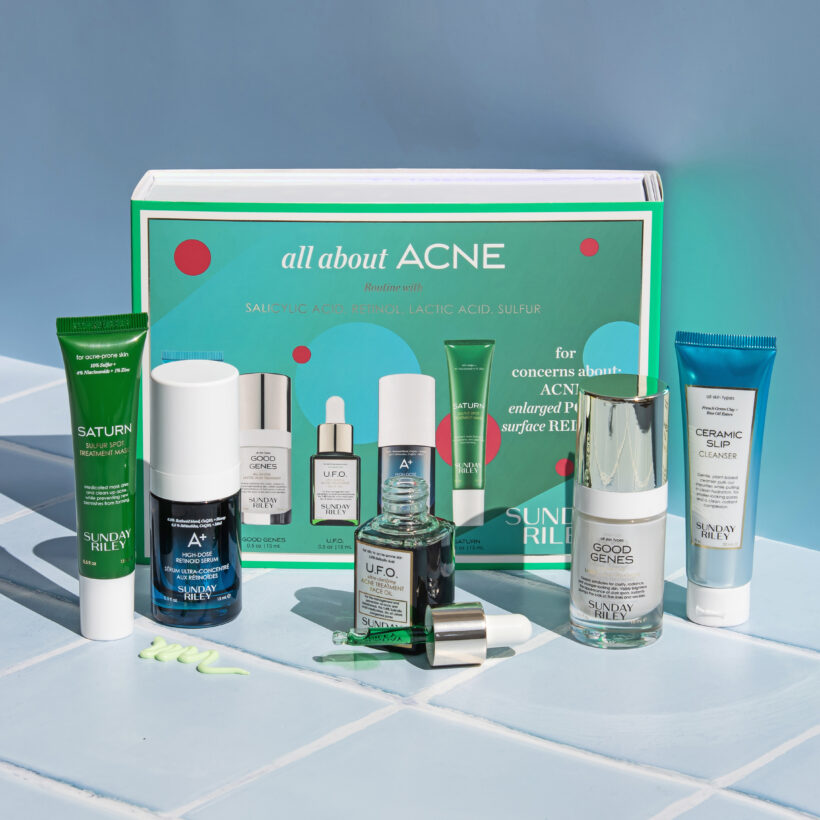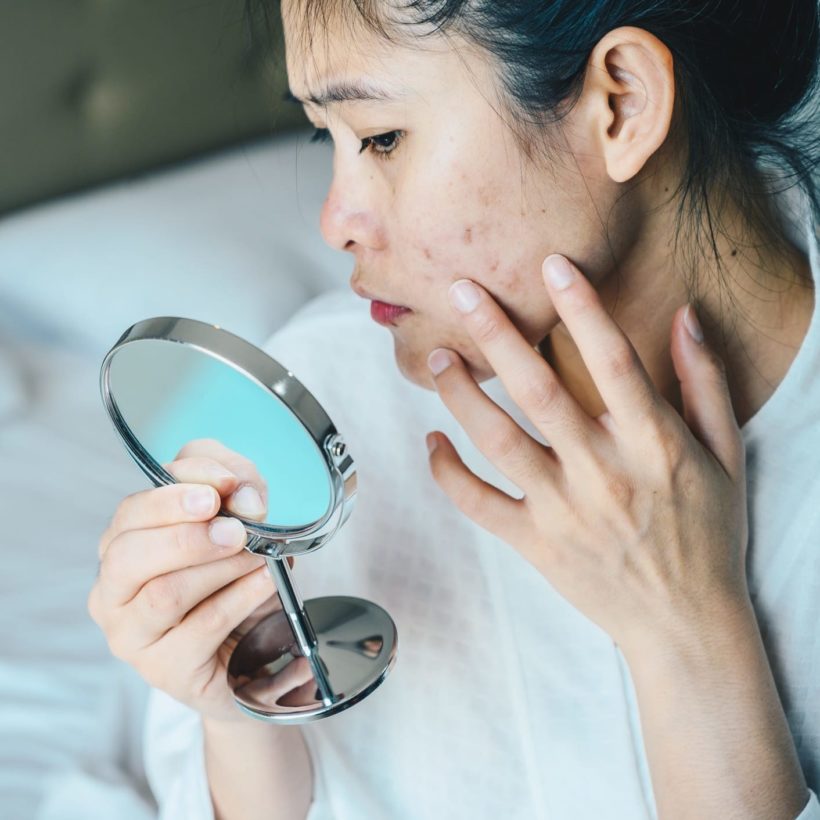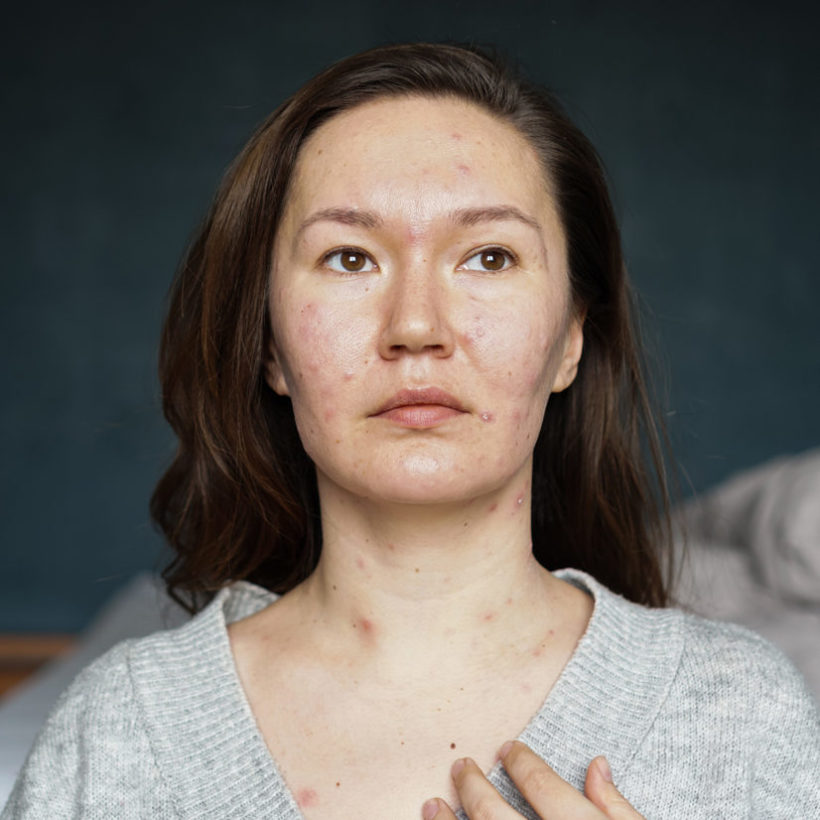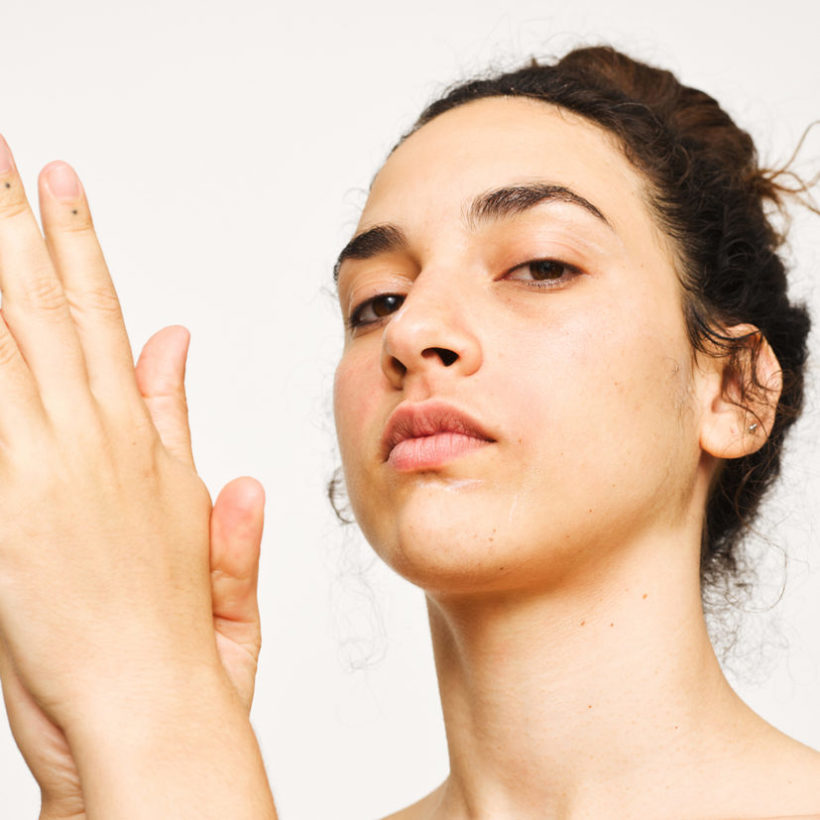Once when I was a teenager, I covered a picked-at pimple with a Band-Aid. You know, to make it less noticeable. My adult self wouldn’t take this route (hopefully), but what should an adult with acne do differently from a teen? Are adult and teen acne the same thing? Should they get the same treatment? The experts help clear things up — literally and figuratively.
Teen and adult acne are the same in most ways. For starters, the cause is often the same — something triggers an overproduction of sebum, pores get clogged and attract bacteria, the body sends an inflammatory response, and ensuing acne appears. The overproduction of sebum can come from hormones, which we know go crazy in the teenage puberty years but can also fluctuate in adulthood, especially for women. Stress increases the release of stress hormones and leads to dry skin and excessive oil production and secretion. Medications, diet, and genetics can all play a role in acne for teens and adults. And both adult and teen acne can be made worse by makeup that clogs pores and poor hygiene, i.e., not washing your face properly.

However, there are some ways in which teen and adult acne differ. “Teenage acne usually presents with blackheads, whiteheads, papules (red bumps), and cysts,” explains Dr. Goldenberg of Goldenberg Dermatology. “Adult patients usually have mostly papules and cysts, with many lesions under the skin surface.” Placement is also different, he says: Adult acne is usually in a U-shape, involving the jawline and area around the mouth; teenage acne tends to appear on the T-zone — forehead, nose, and cheeks.
Regarding treatments, some dermatologists look at topical treatment options for teens, “Usually a combination of retinoids, topical and oral antibiotics, and Accutane in serious cases,” says Dr. Goldenberg. For adult patients, he’s seen success with in-office treatments, including light therapies, laser treatments, peels, and microneedling.
For Dr. Greenberg, naturopathic doctor and founder of the Center for Integrative Dermatology, treatment doesn’t change based on age: “Acne is acne; it makes no difference what age the patient is.” Her two-prong treatment plan starts by finding the root cause of a patient’s acne. By running tests on a patient’s gut, she can assess the microbiome’s health. Usually, she sees an overgrowth of H.Pylori, candida, and protozoa, all of which can contribute to acne. So her first step is to kill off these gut invaders and restore the health of the gut microbiome. She often sees acne in patients who consume a diet high in dairy, sugar, wheat, and meat, which research has also shown a connection between. By fixing the diet, she sees a vast improvement in acne.

Dr. Greenberg pairs this with her second prong for acne treatment: skincare. “Diet is important, but you can’t always eat your way to clean skin,” says Dr. Greenberg. “And you can’t fix acne by poking at the skin from the outside.” Instead, she uses natural botanical topicals to clear up scarring and hyperpigmentation and reduce sebum. She also measures the skin’s pH or acidity to get it between a level of 4 and 5.5, which will result in “fewer wrinkles and dark spots.” And when it comes to products, she opts for oil-based serums instead.
Other anti-acne ingredients that can be helpful include glycolic acid, which removes dirt and oil from the skin; salicylic acid, which removes dead skin cells before they attract bacteria; and retinol, which can prevent pimples from forming. Seem a bit overwhelming? Thankfully, there’s a straightforward kit to cover all these bases with the Sunday Riley All About Acne Kit. It includes the U.F.O. Ultra-Clarifying Face Oil, which boasts salicylic acid and tea tree oil to target T-zone acne and the chin area, making it effective for both teen and adult acne. The kit also comes with Good Genes Lactic Acid Treatment, which sloughs off bacteria-attracting dead skin cells. The Ceramic Slip Cleanser washes away impurities without stripping skin of natural oils, leaving skin dry and overcompensating with excess oil production. Follow that with A+ High-Dose Retinoid Serum, designed to improve the look of congested and environmentally-damaged skin. The kit also comes with Saturn Sulfur Spot Treatment that can be dabbed onto blemishes to help clear any existing pimples.
One final word of advice: If both parent and teen have acne, we recommend a kit for each person to avoid “Where’s my Saturn?!” yelling matches.
We only recommend products we have independently researched, tested, and loved. If you purchase a product found through our links, Sunday Edit may earn an affiliate commission.








